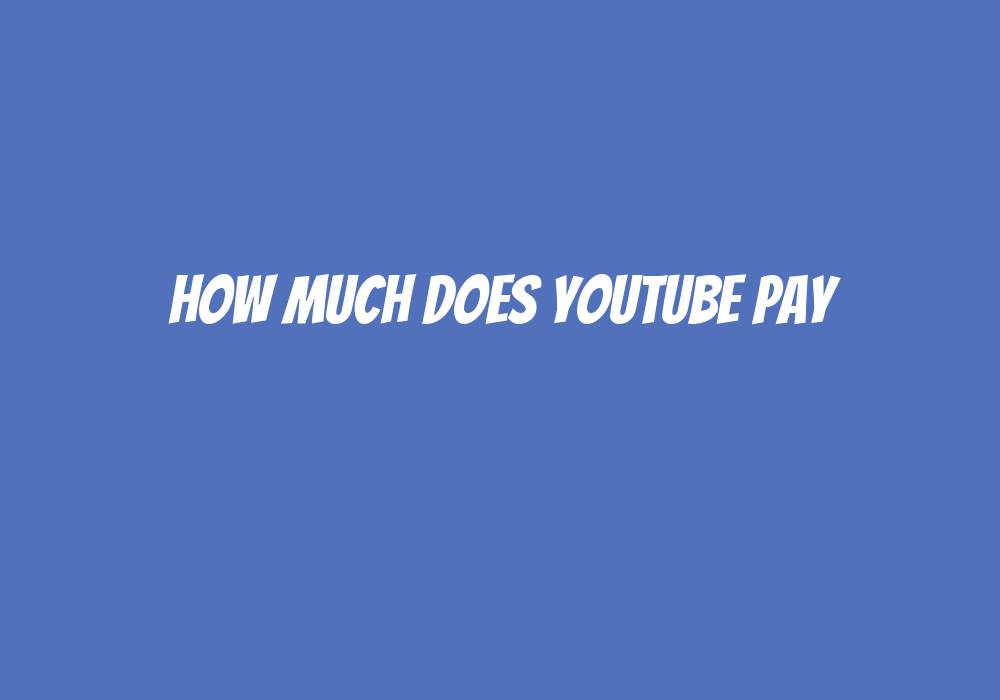How Much Does Youtube Pay

In the digital age, platforms like YouTube have become more than just entertainment hubs; they are also avenues for content creators to monetize their creativity. From makeup tutorials to gaming walkthroughs, YouTube offers a diverse range of content, attracting millions of viewers daily. However, the burning question remains: How much does YouTube pay its content creators?
Table of Contents
ToggleUnderstanding YouTube’s Payment Model
YouTube’s payment model revolves around several key components. The primary revenue streams for creators include advertisements, YouTube Premium revenue, channel memberships, merchandise shelf, and Super Chat & Super Stickers. Let’s delve into each of these
Advertisements
Advertisements are the most common revenue source for YouTube creators. Advertisers pay YouTube to display ads on videos, and creators earn a share of the revenue generated from these ads. The exact amount varies based on factors like the number of views, ad engagement, and the advertiser’s budget.
YouTube Premium Revenue
YouTube Premium is a subscription service that offers an ad-free viewing experience along with other premium features. Creators receive a portion of the revenue generated from YouTube Premium subscribers who watch their content.
Channel Memberships
Channel memberships allow viewers to subscribe to a creator’s channel for a monthly fee in exchange for perks like exclusive badges, emojis, and access to members-only content. Creators receive a portion of the membership fees from their subscribers.
Merchandise Shelf
Creators can sell their branded merchandise directly on their YouTube channel through the Merchandise Shelf feature. They earn a percentage of the sales made through this platform.
Super Chat & Super Stickers
Super Chat and Super Stickers are features that allow viewers to purchase highlighted messages or animated stickers during live streams. Creators receive a portion of the revenue generated from these purchases.
Factors Influencing Earnings
Several factors influence how much money a YouTube content creator earns:
Advertiser Demand
Ad revenue fluctuates based on advertiser demand, seasonal trends, and market conditions.
Audience Size and Engagement
Creators with larger, more engaged audiences tend to earn more revenue.
Content Niche
Certain niches attract higher advertising rates, leading to potentially higher earnings for creators in those categories.
Geography
Ad rates vary by region, with creators in regions with higher ad rates generally earning more.
Monetization Methods
Diversifying revenue streams through channel memberships, merchandise sales, and other monetization methods can increase overall earnings.
Case Study
PewDiePie, one of YouTube’s most well-known creators, reportedly earned over $12 million in 2020 from various revenue sources, including ads, merchandise sales, and brand partnerships.
Conclusion
While the exact amount YouTube pays its content creators varies widely, it’s evident that the platform offers significant earning potential for those who can attract and engage a sizable audience. By understanding YouTube’s payment model, optimizing content for monetization, and building a loyal fan base, creators can unlock opportunities to generate substantial income from their passion for creating content on the platform.






